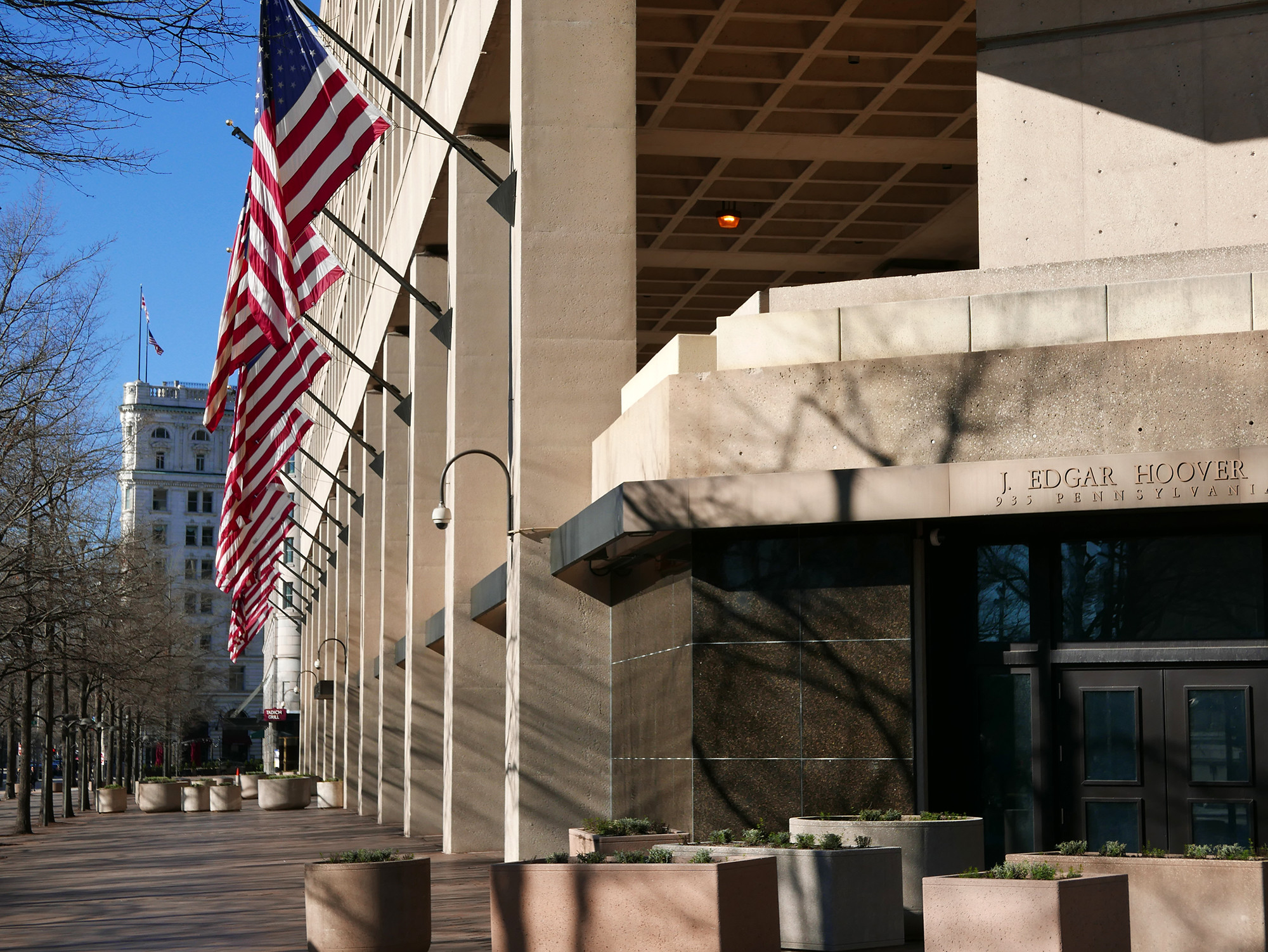An Assessment of the U.S. Government’s Domestic Terrorism Assessment
The FBI and Department of Homeland Security released one of the most consequential national security reports you likely never heard of. Here are the main takeaways.

Published by The Lawfare Institute
in Cooperation With

Late in the afternoon on Friday, May 14, the FBI and the Department of Homeland Security released one of the more consequential national security reports you likely never heard of. The document, put out in consultation with the director of national intelligence, is a joint report containing a strategic intelligence assessment and data on domestic terrorism. The congressionally mandated report assesses the domestic terrorism threat, details the agencies’ investigative procedures and provides data on domestic terrorism cases.
The document screams of a Frankenstein interagency coordination exercise, complete with sections with different fonts and writing styles, reflecting the variety of departments and agencies involved in putting it together. The 40-page report is a valiant, albeit incomplete, attempt to lay down an initial marker on the state of domestic terrorism in America. The news cycle about the report may have come and gone, but here are some important takeaways that shouldn’t be overlooked.
The Public Finally Has the Data, Sort Of.
For the first time, the FBI has put a solid number on domestic terrorism arrests in the United States. In short, it has been arresting fewer and fewer domestic terrorism subjects every year since 2015.
The FBI conducted approximately 1,000 domestic terrorism investigations each year from fiscal 2017 to fiscal 2019. “Investigations'” come in different forms, and unfortunately the bureau did not break down that number to indicate how many are coded as assessments, preliminary investigations and full investigations. Those differences could help reveal more about the scope and depth of the workload. While the number of domestic terrorism-related deaths increased over the three years, the number of arrests and charges decreased each year. Between fiscal 2015 and fiscal 2019, almost 850 domestic terrorism suspects were arrested by or in connection with the FBI. In fiscal 2019, around 107 subjects were arrested—about half the number arrested in fiscal 2015.
The report focuses on data from 2017 to 2019. In that period, there were 57 domestic terrorism-related deaths, 47 of which were racially motivated, and most of the perpetrators were white supremacists. According to the report, 2019 was the most lethal year for domestic violent extremism attacks since 1995. The agencies assessed in 2019 that racially motivated extremists, primarily those advocating for white supremacy, “likely would continue to be the most lethal [domestic violent extremism] threat to the Homeland.”
The bureau released more than 4,000 domestic terrorism intelligence products (ranging from finished and vetted intelligence analysis to raw datapoints) from 2015 to 2019. The Department of Homeland Security also released approximately 1,000 raw intelligence products over a three-year period starting in 2016.
While there was some granularity in details provided in the report about arrests and deaths, there was also some bureaucratic circumspection. Congress asked, for example, How many people do you have working on countering domestic terrorism? It took 427 words, with grandiose prose about the importance of Joint Terrorism Task Forces and its partnerships with state and local law enforcement, but the bureau didn’t answer Congress’s direct question. Instead, the bureau responded that, “[i]n FBI Field Offices, squads are dedicated to the counterterrorism mission and not necessarily assigned specifically to investigate [domestic terrorism] or [international terrorism] matters.” That’s true. But what’s also true is that there are domestic terrorism-dedicated agents and analysts in certain field offices. It is possible to count heads while acknowledging that the number is only the floor, not the ceiling, of the total number of personnel working on these issues.
The lack of clarity on the number of personnel is not limited to the FBI and the Department of Homeland Security. Quite simply, no one put the system in place to count the numbers until now. Recently, Acting Deputy Attorney General John Carlin sent a memo to the U.S. attorney’s offices around the country laying out new ground rules for domestic terrorism prosections. According to the memo, the D.C.-based contingent of the Justice Department is requiring that all domestic terrorism cases be run past the National Security Division in Washington, D.C., which in theory would help ensure that there is consistent data for future congressional requests.
It’s Going to Get Worse.
While the report is focused on data from 2019 and prior years, FBI Director Christopher Wray stated recently in congressional testimony that the number of yearly domestic terrorism investigations has doubled to approximately 2,000, since the time frame covered by the report. Indeed, the FBI is in the midst of one of the largest investigations in its history: prosecuting those involved in the Jan. 6 attack on the Capitol. The arrestees range from traditional domestic terrorism subjects (think hardened militia members and white supremacists) to the more mundane soccer dads taking selfies in the Senate rotunda. The FBI may be facing a tricky question in future reports as it decides whether to code the arrests of more than 445 individuals involved in the attack as domestic terrorism cases, which would be more than triple the number of domestic terrorism arrests in 2019.
The domestic terrorism report warns that lone attackers with easily accessible weapons present the greatest terrorism threat to the United States. “Our agencies had high confidence in this assessment based on the demonstrated capability of [racially or ethnically motivated violent extremists] in 2019 to select weapons and targets to conduct attacks, and the effectiveness of online [racially or ethnically motivated violent extremist] messaging calling for increased violence,” the report says. “Additionally, other [domestic violent extremists] likely would continue to engage in non-lethal violence and other criminal activity, and [domestic violent extremist] reactions to socio-political events and conditions could increase attacks.”
The report details the factors that will continue to inspire domestic terrorism plots, including gamification and accelerationism. Gamification occurs when attacks are likened to playing video games, where fatality counts are equated to scores and perpetrators attempt to achieve a high kill count. Racially motivated extremists, in particular, use this language on online forums and in chat applications to encourage attacks with higher fatality rates. Themes of accelerationism—a belief among some neo-Nazis and other racially motivated extremists that violence is needed to bring about societal collapse and start a civil war—are also found on these platforms. These topics have been long discussed among researchers, but it is heartening to see them make it into a U.S. government report.
It’s Not Just Right-Wing Extremism.
“Domestic terrorism” is a catch-all phrase within law enforcement circles. It encompasses not only right-wing extremism but also single-issue extremists, left-wing extremism, and other ideologies. The report acknowledges, for the first time by the FBI, that the deadly attack on Republican congressmen at a baseball field in 2017 was an act of domestic terrorism—it had previously designated the incident as “suicide by cop.” The report also lays out a number of other cases, including one of Puerto Rican violent extremism and another in which an anti-government extremist allegedly firebombed an Immigrations and Customs Enforcement detention facility. Ultimately, though, the listing of 85 domestic terrorism cases in the appendix seems both incomplete and random, which may speak more to the incomplete nature of data collection within the government and to the diversity of threats under the umbrella of domestic terrorism than to the nature of the reporting requirement spelled out by Congress.
DIOG Nerds, Rejoice.
The Domestic Investigations and Operations Guide, or the DIOG for short, is the law enforcement bible for FBI investigations. The bureau performed an admirable job in adding into the report a summary with accessible detail about how investigations are opened, managed and closed.
Per the DIOG, the FBI can open a preliminary investigation based on any “allegation or information” that suggests criminal activity or a threat to national security. To initiate a full investigation, the FBI needs an “articulable factual basis” that a federal crime or threat to national security has occurred, or is occurring, and that an investigation could allow the bureau to obtain pertinent information. Full investigations require greater oversight and provide agents with a wider range of investigative tools. Unlike full international terrorism investigations, opening a preliminary or full domestic terrorism case requires approval from the field office’s chief division counsel. Some of the investigative tools available to the FBI differ in domestic terrorism and international terrorism investigations. A chart in the report lays out these differences, noting key distinctions such as the availability of national security letters to compel the disclosure of records in international terrorism cases but not domestic ones, and the ability to conduct electronic surveillance under the Foreign Intelligence Surveillance Act of 1978 in international terrorism investigations. The summary in the report indicates that preliminary investigations must be closed within six months or extended for an additional six months. Closing a preliminary or full domestic terrorism investigation requires approval from a supervisory special agent. Having this type of information readily available to the public may help demystify the seemingly opaque system of counterterrorism investigations.
A Holding Pattern Until the White House Acts
Congress required the report to have “recommendations with respect to needing to change authorities, roles, resources, or responsibilities within the federal government to more effectively prevent and counter [domestic terrorism] activities.” Both the FBI and the Department of Homeland Security respectfully declined to do so. Their reasoning was less about thumbing their nose at a clear congressional directive and more the result of the interagency process being in a holding pattern on the future of countering domestic terrorism until the Biden adminstration completes its “comprehensive review” of existing programs. The White House has indicated that the review is in its final stages and will be released shortly. The prevailing belief is that the review will also include a first-of-its-kind domestic terrorism strategy. No doubt the data listed in this Department of Homeland Security/FBI assessment will inform both this strategy’s objectives and the resources available for it. Indeed, the Justice Department has already requested millions more in funding to address domestic terrorism in the United States.
This FBI and Department of Homeland Security report is a first-of-its-kind public assessment of domestic terrorism. The report isn’t a home-run swing but was a good first step toward greater transparency into an issue that is chief among the minds of both policymakers and the public. The effort advances some threads worth following and hopefully won’t be relegated to obscurity because of a Friday evening news dump.






